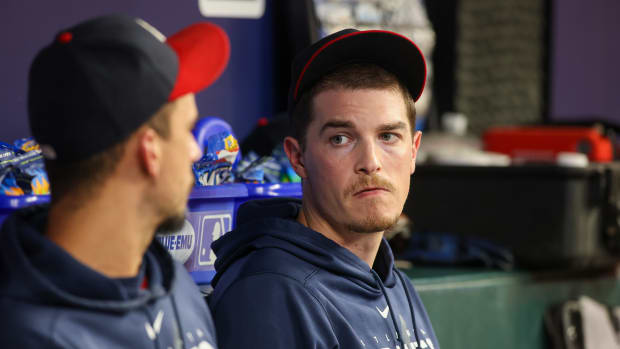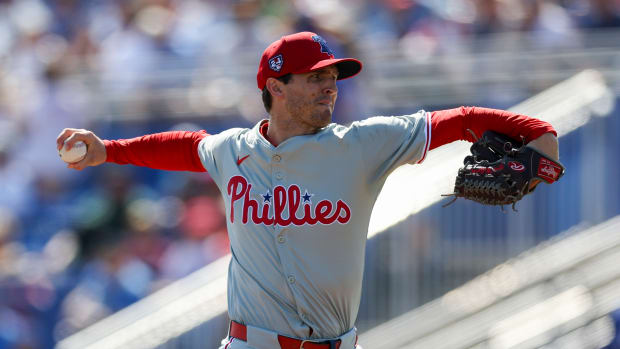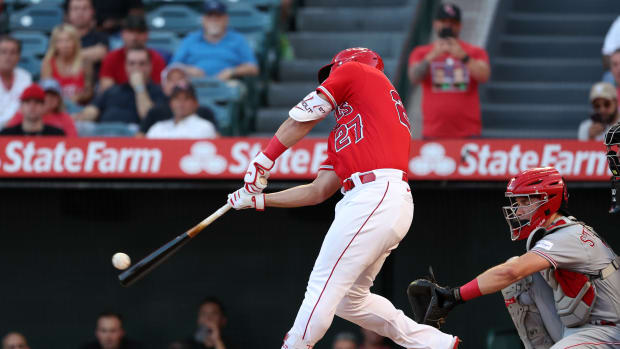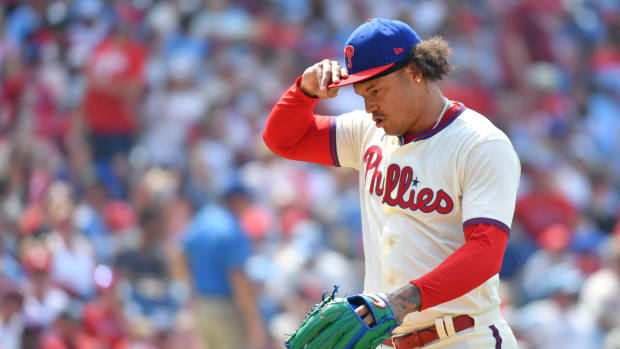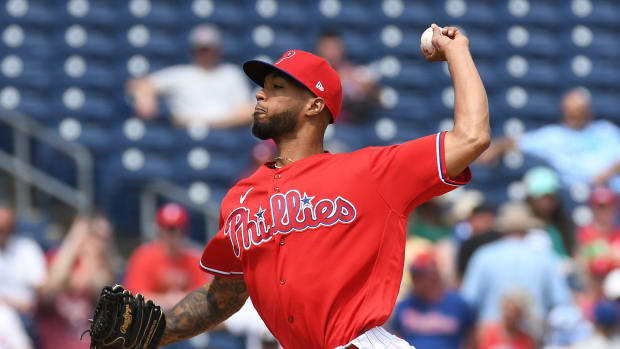Is Bryce Harper's 2021 the Best Offensive Season in Phillies History?
What makes a great offensive season? Not long ago, most MVPs were decided by batting average, home runs, and RBI. As analytics took hold in the late 90s and 2000s, OBP and OPS became deciding factors in the value of a player, but with the advent of more easily accessible statistics, more and more data is available to baseball fans. That said, where does Bryce Harper’s 2021 MVP season rank in the canon of Phillies history?
Last season, Harper put up a slash line of .309/.429/.615 with 35 home runs in 599 plate appearances, his OPS+ was 179, the highest for a Phillie in a full season since Dick Allen in 1966.
Since the integration era began in 1947, four Phillies have had individual qualifying seasons with an OPS of over 1.000: Mike Schmidt (1980 - 1.004, 1981 - 1.080), Dick Allen (1966 - 1.027), Bryce Harper (2021 - 1.044), and Ryan Howard (2006 - 1.084).
Schmidt’s 1981 and Howard’s 2006 are both higher than Harper’s OPS of 1.044, yet the era in which they played must be taken into account. 1981 was a strike year for MLB. Baseball was put on hold from July 10 to August 10, and Schmidt was only able to accrue 434 plate appearances, not enough to qualify in a non-shortened season.
Schmidt’s dominance was apparent when he posted the best rate stats of his career, but much like Corbin Burnes and Zack Wheeler in the 2021 Cy Young race, the player who has 28% more appearances is more valuable when the margin of difference between the two players is that insignificant. Schmidt's OPS was only .036 points higher than Harper's.
In 2006, the league average OPS was .768, a high unmatched outside the steroid era or the “rabbit ball” years of 1929 and 1930. Simply put, major league pitching was worse in 2006 than in 2021 when league average OPS was .728. Adjusted statistics like OPS+ take league averages into account, nullifying park factors, year-to-year differences in baseball construction, umpiring or rule changes.
This is reflected by a 12 point advantage to Harper's OPS+, even though Howard had a .040 OPS advantage. That year Howard's OPS+ was 167, in 2021 Harper's was 179.
Each point of OPS+ above or below 100 indicates a percentage point better or worse than league average. By negating season-to-season variations, we can see that Harper was 12% better than Howard by OPS, not an insignificant margin.
While it would seem Harper’s power numbers are dwarfed by Howard’s 58 home runs, their ISO’s are shockingly close. ISO, or isolated power, measures a hitter’s ability to accumulate extra base hits and is calculated by subtracting AVG from SLG, thereby removing singles from that total. In 2006, Howard’s ISO was .346, and in 2021, Harper’s ISO was .305.
Though Howard has an edge through power numbers, Harper’s OPS totals are inherently more valuable due to the correlation between OPS and runs scored.
In the year 2000, Bucknell University ran a study to determine which statistic had the largest correlation between a team’s runs scored and individual statistics. Using all data available from major league seasons between 1996 and 2000 they found that the correlation between a team’s OPS and a team’s runs scored was 90.0%, while the correlation between slugging (the basis for ISO) and runs scored is 80.4%. The correlation between home runs and runs scored was 54.2%. This proves that Harper’s OPS advantage is far more valuable than Howard’s power advantage.
When Dick Allen posted his 1.027 OPS in 1966, he became the first Phillie since Dolph Camilli in 1937 to have an OPS over 1.000. On a purely rate basis, Allen’s stats don’t match up to Harper’s, but just because his OPS was lower doesn’t mean he was less valuable.
1966 did not give batters the benefit of the reforms following the 1968 "year of the pitcher." The mound had not been lowered, the strike zone had not been shrunk from the shoulders to the armpits, and league average OPS was .686.
Allen’s OPS+ that year was 181, two points higher than Harper in 2021. Allen’s power numbers were better, 40 home runs to 35, and an ISO of .315 to .305. He had to face tougher competition; only 20 teams competed throughout the MLB, meaning fewer spots existed for mediocre players.
While Harper’s raw on-base numbers were better than Allen’s, Allen was more valuable to his team almost across the board. Just using one number, OPS, it’s possible to make the case for Harper, but baseball isn’t about one number, if it were, the MVP race would be decided every year as soon as the season ended.
What Dick Allen did during the 1966 season is nothing short of improbable and when his Hall of Fame case comes before the Veterans Committee on December 5th it seems obvious he should be the next Phillie in the Hall of Fame. But if Harper can continue his trajectory over the next 10 years of his $330 million contract in Philadelphia, he could very well follow Allen soon after.
More From SI's Inside The Phillies:
- Bryce Harper Wins National League MVP Award
- Is Bryson Stott Ready to Be the Phillies' Everyday Shortstop?
- This Player Just Makes Too Much Sense for the Phillies
Make sure to follow Inside the Phillies on Facebook and Twitter!

